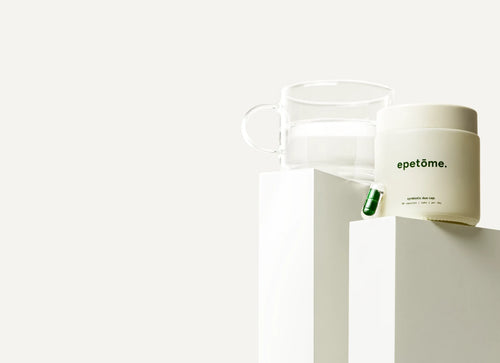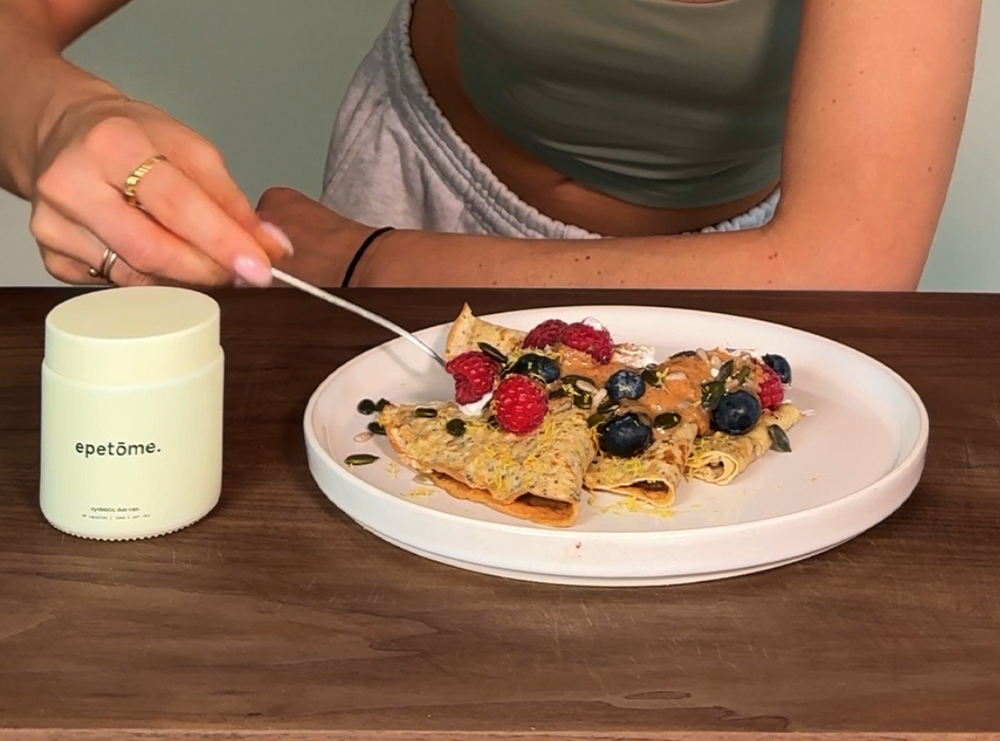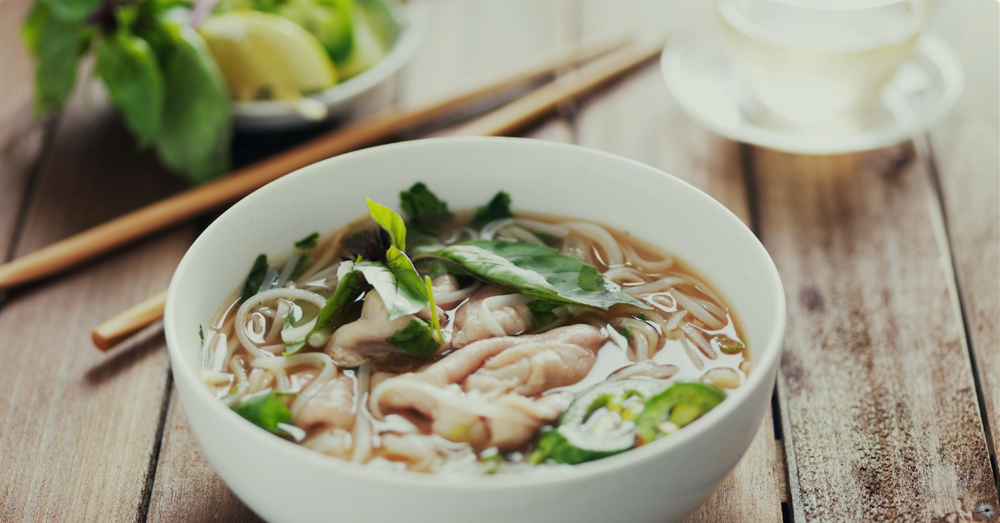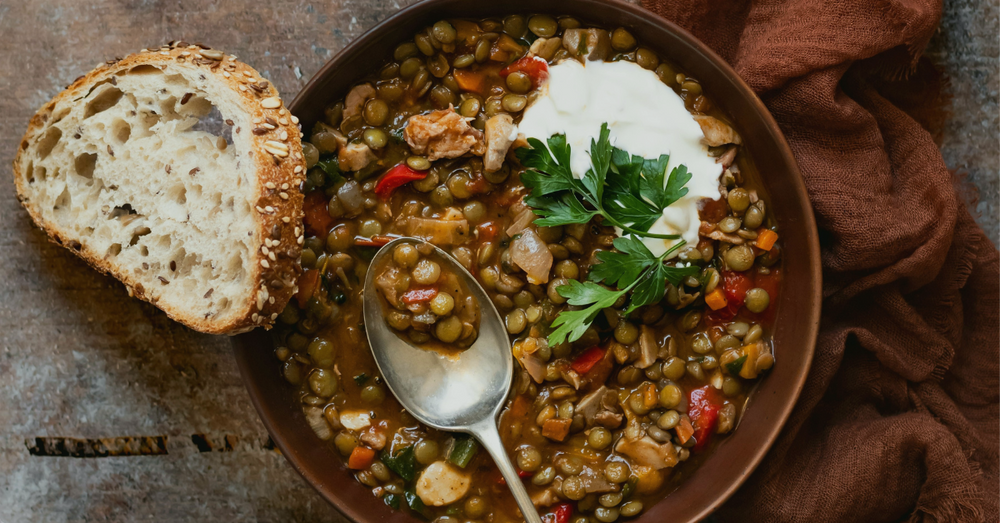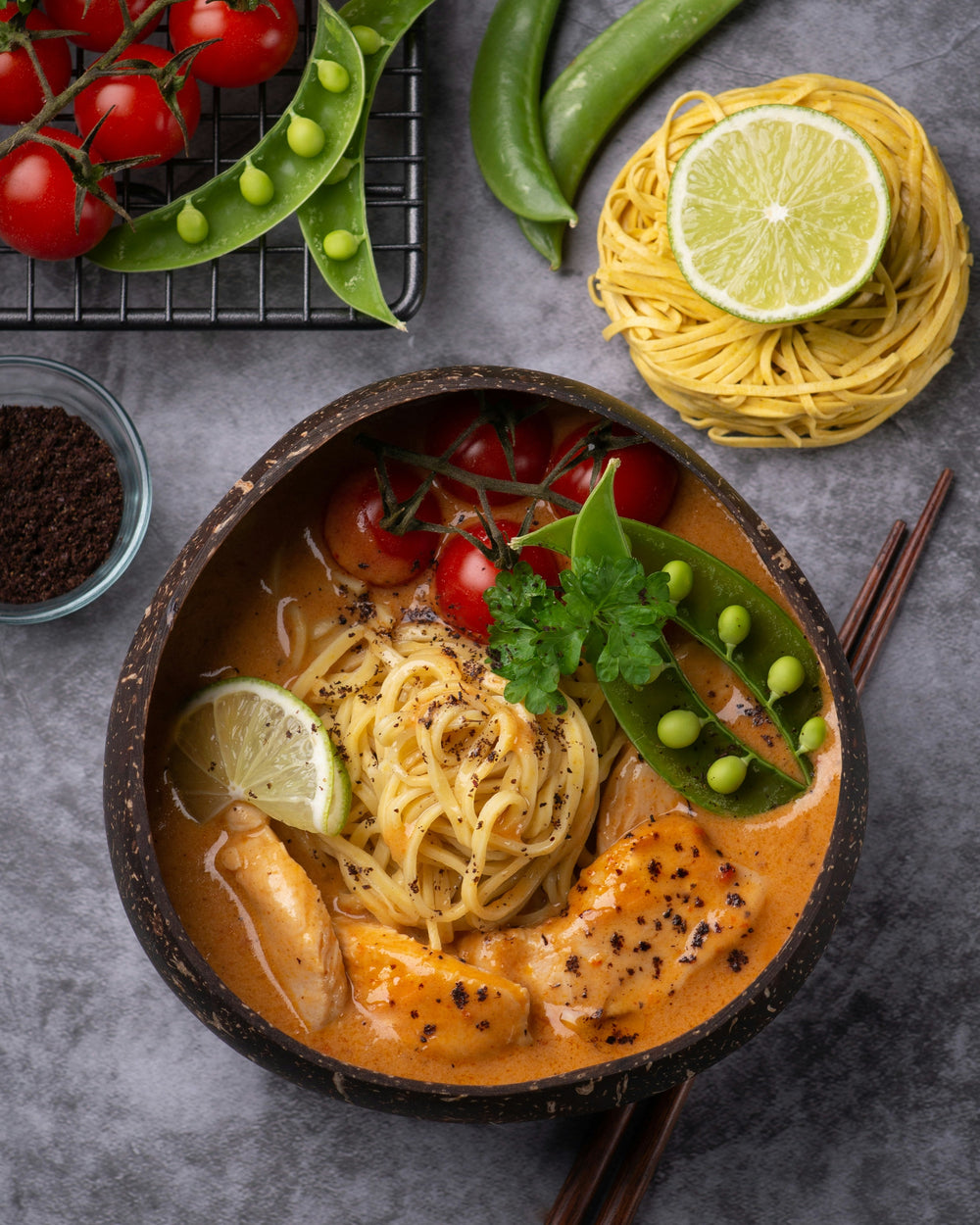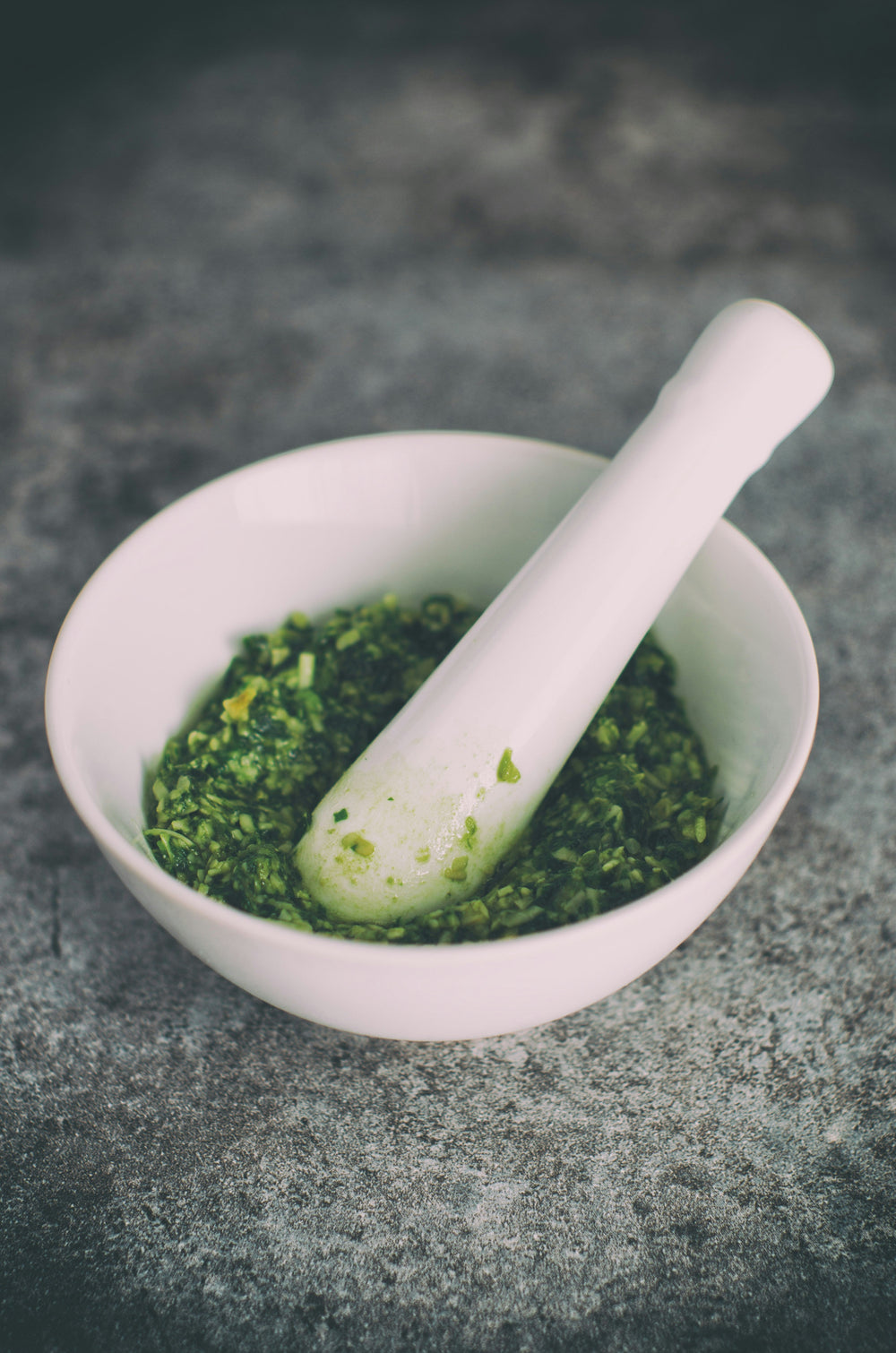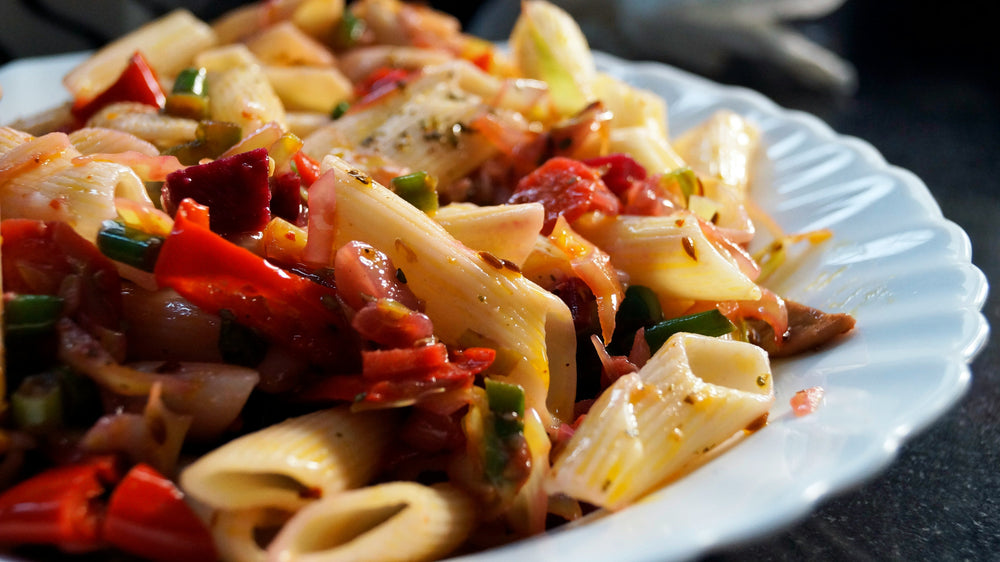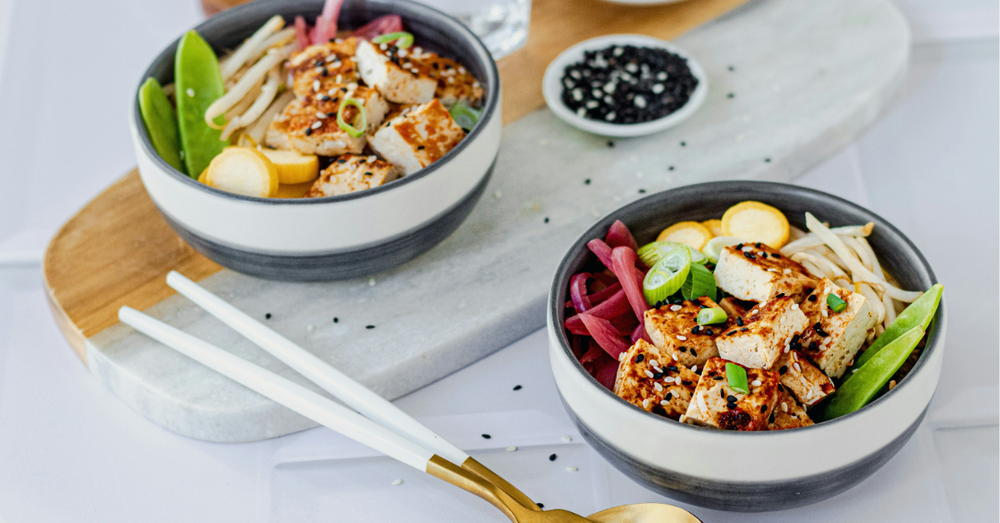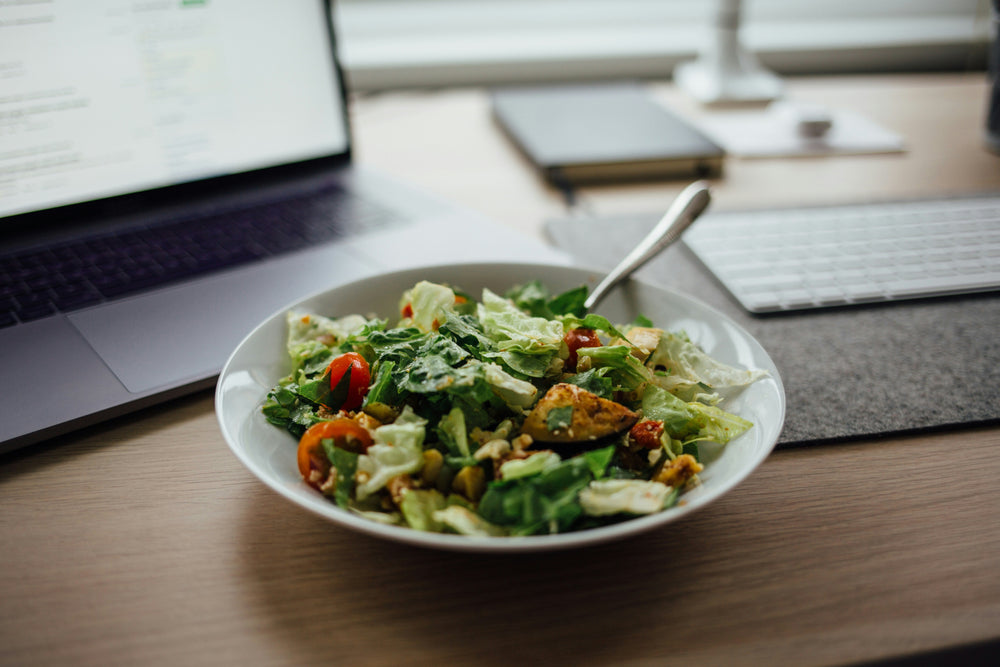This creamy green soup brings together broccoli, cauliflower, and kale for a delicious bowl that feels both comforting and energising. Finished with crispy chickpeas and toasted almonds, it is an easy way to enjoy a whole day’s worth of greens in one simple, nourishing meal.
iron: why it matters and how to maximise absorption.
Iron: Why It Matters and How to Maximise Absorption Iron might not always be top of mind - until you’re exhausted, workouts feel harder, and even everyday tasks drain you. Why Is Iron Important? Iron is a crucial component of haemoglobin, the protein in red blood cells that carries oxygen from your lungs to the rest of your body. It also plays a role in: Energy production – Low iron levels can lead to fatigue and sluggishness. Cognitive function – Your brain relies on oxygen to function at its best. Immune support – Iron helps keep your immune system strong and resilient. Dietary iron deficiency affects around 1.6 billion people worldwide, making it one of the most common nutritional deficiencies. If you often feel weak, tired, or struggle to concentrate, your iron levels may be worth checking. The Two Types of Iron Not all iron is created equal, and how well your body absorbs it depends on the type: Haem iron: This is found in animal products and it’s the easiest for your body to absorb. Non-haem iron: This comes from plant-based foods and it’s a little trickier for your body to absorb, which means you might need to be more intentional about how you get it. Iron and the Gut: The Absorption Connection Since our bodies don’t produce iron, we need to obtain it from food. But it’s not just about how much iron you eat - it’s about how well your body absorbs it. Your gut is where iron gets absorbed, along with other key nutrients like vitamin B12. Both are essential for making healthy red blood cells. However, factors like poor gut health, gastrointestinal conditions, dietary imbalances, or disruptions in gut microbiota can hinder absorption, potentially leading to anaemia. This is why optimising both iron intake and...

Iron: Why It Matters and How to Maximise Absorption
Iron might not always be top of mind - until you’re exhausted, workouts feel harder, and even everyday tasks drain you.
Why Is Iron Important?
Iron is a crucial component of haemoglobin, the protein in red blood cells that carries oxygen from your lungs to the rest of your body. It also plays a role in:
-
Energy production – Low iron levels can lead to fatigue and sluggishness.
-
Cognitive function – Your brain relies on oxygen to function at its best.
-
Immune support – Iron helps keep your immune system strong and resilient.
Dietary iron deficiency affects around 1.6 billion people worldwide, making it one of the most common nutritional deficiencies. If you often feel weak, tired, or struggle to concentrate, your iron levels may be worth checking.
The Two Types of Iron
Not all iron is created equal, and how well your body absorbs it depends on the type:
-
Haem iron: This is found in animal products and it’s the easiest for your body to absorb.
-
Non-haem iron: This comes from plant-based foods and it’s a little trickier for your body to absorb, which means you might need to be more intentional about how you get it.
Iron and the Gut: The Absorption Connection
Since our bodies don’t produce iron, we need to obtain it from food. But it’s not just about how much iron you eat - it’s about how well your body absorbs it.
Your gut is where iron gets absorbed, along with other key nutrients like vitamin B12. Both are essential for making healthy red blood cells. However, factors like poor gut health, gastrointestinal conditions, dietary imbalances, or disruptions in gut microbiota can hinder absorption, potentially leading to anaemia. This is why optimising both iron intake and gut health is essential for maintaining energy levels and overall well-being.
Where to Get Your Iron
Ensuring a balanced intake of iron from different sources can help maintain optimal levels. Here’s where to find it:
Animal-Based Sources (Haem Iron)
-
Red meat (beef, lamb)
-
Poultry (chicken, turkey)
-
Fish (salmon, tuna, sardines, haddock)
-
Liver (beef or chicken liver)
Plant-Based Sources (Non-Haem Iron)
-
Dark leafy greens (spinach, kale, Swiss chard)
-
Legumes (lentils, chickpeas, black beans)
-
Whole grains (quinoa, fortified cereals)
-
Nuts and seeds (pumpkin seeds, cashews, almonds)
-
Soy-based foods (tofu, tempeh)
How to Maximise Iron Absorption
If you’re looking to optimise your iron intake, here are some ways to enhance absorption:
-
Pair iron with vitamin C
Vitamin C converts iron into a more absorbable form. Studies show that consuming 100mg of vitamin C with a meal can increase iron absorption by up to 67%. -
Add an orange to your plate when eating legumes.
-
Add red peppers to your spinach salad.
-
Add a smoothie with iron-rich greens, banana, berries, and a splash of orange juice to your daily routine
-
Time your tea and coffee breaks
Tannins and flavonoids in tea and coffee can inhibit iron absorption by 60-70% if consumed with meals. To avoid this, have tea or coffee between meals rather than alongside them. -
Take a probiotic supplement
Since gut health plays a big role in nutrient absorption, a healthy microbiome may support better iron uptake. Some research suggests probiotics could help, but more studies are needed. -
Snack on nuts and seeds
Pumpkin seeds, cashews, and almonds are excellent plant-based iron sources. -
Incorporate lean red meat and fish weekly
Tinned sardines are especially handy: they’re rich in highly absorbable iron and can be added to salads, pasta, or toast in seconds. And if you're cooking with red meat, try making extra portions and freezing them. That way, you'll always have a quick, iron-rich meal ready to go.
Conclusion
Iron is essential, but it’s not just about how much you get—it’s about how well your body absorbs it. With the right diet tweaks and a gut-friendly approach, you can keep your iron levels where they need to be.
References
Kumar, S. B., Arnipalli, S. R., Mehta, P., Carrau, S., & Ziouzenkova, O. (2022). Iron deficiency anemia: Efficacy and limitations of nutritional and comprehensive mitigation strategies. Nutrients, 14(14), 2976. https://doi.org/10.3390/nu14142976
Moustarah, F., & Daley, S. F. (2024). Dietary Iron. StatPearls [Internet]. StatPearls Publishing. Retrieved from https://www.statpearls.com
Vonderheid, S. C., Tussing-Humphreys, L., Park, C., Pauls, H., OjiNjideka, N., Hemphill, N., LaBomascus, B., McLeod, A., & Koenig, M. D. (2019). A systematic review and meta-analysis on the effects of probiotic species on iron absorption and iron status. Nutrients, 11(12), 2938. https://doi.org/10.3390/nu11122938
lifestyle. gut health recipes.
ready in 10 minutes
herb-whipped cottage cheese chicken bagels.
These basil whipped cottage cheese protein bagels make a fresh, high-protein breakfast or lunch, combining creamy herb-blended cottage cheese with juicy chicken, rocket, and tomatoes. They’re quick to assemble, packed with flavour, and perfect for a nourishing breakfast or light lunch.
ready in 10 minutes
kiwi chocolate protein chia pots.
These Kiwi Chocolate Protein Chia Pots make an ideal high-fibre, high-protein breakfast that keeps you full and energised all morning. They’re quick to prepare, easy to store, and perfect for a healthy grab-and-go option.
ready in 15 minutes
spiced apple porridge.
This spiced apple and pumpkin seed porridge is a warming, high-fibre breakfast that’s perfect for cosy mornings. Made with creamy oats, gently caramelised apples and a crunchy pumpkin seed topping, it’s ready in just 15 minutes and serves one.
ready in 50 minutes
prep-ahead baked blueberry oats.
These prep-ahead oven-baked oats with blueberries and bananas are rich in protein and fibre, making them a nourishing, gut-friendly breakfast to enjoy all week.
ready in 15 minutes
spicy green eggs with feta.
These spicy green eggs with feta are a quick, protein-rich recipe packed with gut-friendly ingredients like spinach, courgette, and spring onion. Baked in the oven or air fryer, they’re simple to make, full of flavour, and support digestion with a balance of fibre, protein, and healthy fats. Perfect for breakfast, brunch, or a light meal, this vibrant dish proves that nourishing your gut can be both delicious and easy.
ready in 10 minutes
egg wrap with pesto.
Bright, fresh, and ready in just 10 minutes, this flavour-packed wrap serves one and is ideal for breakfast, lunch, or any time you’re after something simple yet filling.
ready in 10 minutes
peach cobbler overnight oats.
Start your day with a gut-friendly twist on a classic dessert. The peach cobbler overnight oats serve 2–3 and takes just 10 minutes to prepare the night before. Packed with fibre, flavour and feel-good ingredients, it’s the perfect make-ahead option for busy mornings or a nourishing snack you can enjoy any time of day.
ready in 15 minutes
smoky egg salad bagel crunch.
This smoky harissa egg bagel is the perfect 15-minute meal. Made with creamy Greek yoghurt, tangy pickles, and a hint of spice, it’s a high-protein twist on classic egg salad that delivers on both taste and texture. Ideal for busy days, this easy bagel recipe makes lunch feel gourmet without the effort.
ready in 20 minutes
chewy breakfast matcha protein cookies.
Soft, satisfying, and subtly sweet—these breakfast cookies are made to fuel your morning the right way. With fibre-rich oats, plant-based protein, and antioxidant-packed matcha, they’re a gut-friendly grab-and-go option that doesn’t compromise on flavour or function.
ready in 15 minutes
lemon & poppy seed pancakes.
Emily's light, gut-friendly crêpes are the perfect balance of fibre, protein, and healthy fats to support digestion and keep you feeling great.
ready in 10 minutes
carrot cake breakfast oats.
Start your day with a delicious and nutritious breakfast option - Carrot Cake Oats. Filled with fibre diversity to promote healthy digestion.
